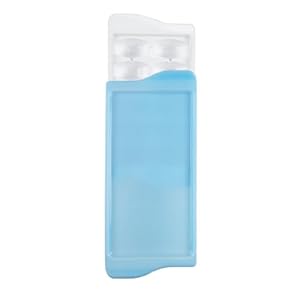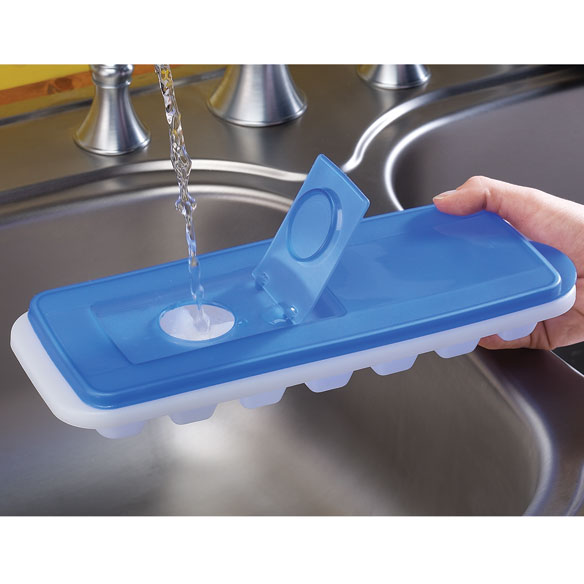In the first part of this series, I placed a general spotlight on the great products OXO makes. While they are fantastic, they certainly aren't all that is out there. So I'd like to talk about some of the other products out there that help people in the kitchen.
The Ove Glove
I was looking at a listing of the top 12 kitchen injuries on NursingSchools.net (http://www.nursingschools.net/blog/2011/01/12-most-common-kitchen-injuries-you-need-to-know-about/), and the number 3 injury was oven burns. Now, they talk about people brushing the sides or top of the oven when taking things in or out. Sometimes, pot holders or regular oven mitts are too cumbersome to use effectively. The Ove Glove is a nice little product because it gives you all 5 fingers free I also gives you a non-slip textured grip which can help you hold on to pots, roasting pans, or anything hot you may be trying to pick up and move.How does it do with heat? Well, I was able to pick up a 12" cast iron pan out of a 425 oven and the only thing I felt was the weight of the pan. The heat didn't come through at all even when I held it for a while.
Finding an Ove Glove shouldn't be too difficult, a simple Google search showed I have 4 stores near me that carry them, two actually in Delaware, as well as lots of options if you're willing to order online. the best price I found was $16.99 with free shipping from Drugstore.com. Still, look around and see what you can see.
Talking Thermometer
One of the tools I find myself using more and more in the kitchen is the thermometer. My wonky oven aside, I've learned that it's good to be able to check the actual internal temperatures of some things when you're cooking. Go figure! Imagine trying to check the temperature on something if you're reading one of the older "dial style" thermometers or even a digital one with small print.
Horrible.
So what can I use instead? Try a talking digital thermometer. Yep, they do make talking digitals for the kitchen too. One that I've found that I think does a great job is the RT8400 Digital Talking Thermometer from ThermoWorks. The unit has a very simplistic design--big LCD display and a big button you press to hear the temperature. No fuss, no muss.
The thermometer can take reading in seconds, reads in both Fahrenheit and Celsius, has a nice little cover/sheath to protect the probe, and is even nicely shaped to easily fit the user's hand. Right now, ThermoWorks has the unit marked down from $39 to $29. One of the things I really like about this unit, and about ThermoWorks, is that they explicitly say that this unit works well for people with a visual impairment. I don't know if that was indeed a target audience when the thermometer was being designed, but I'm glad that they do acknowledge it's usefulness to people with visual impairment. You can see the thermometer on the ThermoWorks website at http://www.thermoworks.com/products/low_cost/RT8400_Talking_Thermometer.html?gclid=CLvQ0qGy4qMCFV195Qod7yPskw.
Horrible.
So what can I use instead? Try a talking digital thermometer. Yep, they do make talking digitals for the kitchen too. One that I've found that I think does a great job is the RT8400 Digital Talking Thermometer from ThermoWorks. The unit has a very simplistic design--big LCD display and a big button you press to hear the temperature. No fuss, no muss.
Covered Ice Cube Trays
I'm posting this one because for some reason, I'm having a few requests for these at work. The unit that we have on the shelves at work is no longer available. It's actually kinda neat. You take the cap off of the end, fill the bottle with water up to the fill line, put the cap back on and then lay it down in the freezer. When the water had frozen, all you had to do wasIn talking to the people who were searching high and low for these things I came to learn that These ice trays are very popular with users who have arthritis or manual dexterity problems. There's none of the grabbing the tray and twisting to free up the cubes. Considering as how I would either launch ice cubes or break the trays in trying to get all of the cubes out of regular trays, I think I can even get behind these. The problem is, this particular tray is no longer available.
Enter The Replacements!
There are a few other covered ice cube trays on the market that seem like suitable replacements. One is the from OXO and it's fantastic.
This lovely little ice tray has nicely rounded compartments for the cubes, making it easier for them to slide out of the tray. The lid also makes it easier to stack without spilling. Yep, that means no more glaciers in the freezer due to spillage! You can check it out on the OXO website at http://www.oxo.com/p-1041-ice-cube-tray.aspx.
Another nice option for covered ice cube trays is also pretty darned cool. It's also called simply the covered ice cube tray. It's really just a simple design-- snap on top with a fill hole. That's it. Don't believe me? Check it out yourself.
Want to fill it? Just snap the top on firmly and then flip back the cover on the fill-hole. Snap the fill-hole cover back in place and pop it in the freezer. Ready to take the cubes out? Take the cover off and work the tray. OK, so I would have to do a little twisting, BUT if I keep the lid on, I can actually flip the tray over first and then pound hammer tap on the bottom to loosen up the cubes. Then I just flip it back right-side up, take off the cover, and I'm ready to enjoy the cold magic of my ice cubes! If this model is more to your liking, you can check it out at http://www.wdrake.com/WalterDrake/DisplayItem.aspx?id=329214&ICMP=Search&SourceCode=20509000001&CAWELAID=1183841333.
There are lots and lots of different "kitchen gadgets" that also double for AT, and similarly, a lot of AT that can be useful kitchen gadgets. One tool you may want to make sure you have available in the kitchen is a "reacher"/grabber. The key to finding a useful reacher for the kitchen is finding one that you can comfortably use to take cans, jars, bottles, or whatever off of shelves. I usually like a reacher with a good, solid grip so it can hold on to items easily, rubberized jaws so they can hold things without them slipping out of the jaws, and good light weight so I'm not fighting the weight of the reacher while I'm trying to lift something with it. There are a lot of different models and makes available, so I recommend taking your time and looking at a few before making your purchase.
More resources
I found more helpful information on cooking with a disability from the following resources:
"Ten Tips for Cooking with A Disability or Injury" from the Cooking Manager blog has some great ideas. The author has written a follow-up post, "More Tips on Cooking with A Disability or Injury," which has even more useful help. You can find the first blog posting at http://www.cookingmanager.com/tipscooking-disability-injury/ and the second one at http://www.cookingmanager.com/cooking-disability-injury-tip/
The Disabled Hands blog has a kitchen section with lots of selections of useful kitchen items for people with limited dexterity. They have a large array of items to check out as well as commentary from users on just how useful the items are. Definitely a great resource. You can find it at http://www.disabledhands.com/kitchen/.
Caring.com has a nice article on it's website entitled, "Making the Kitchen Safe and Convenient for Seniors." While the title says it's for seniors, the tips are great for improving the overall accessibility of any kitchen. You can find it at http://www.caring.com/articles/senior-kitchen-safety.







